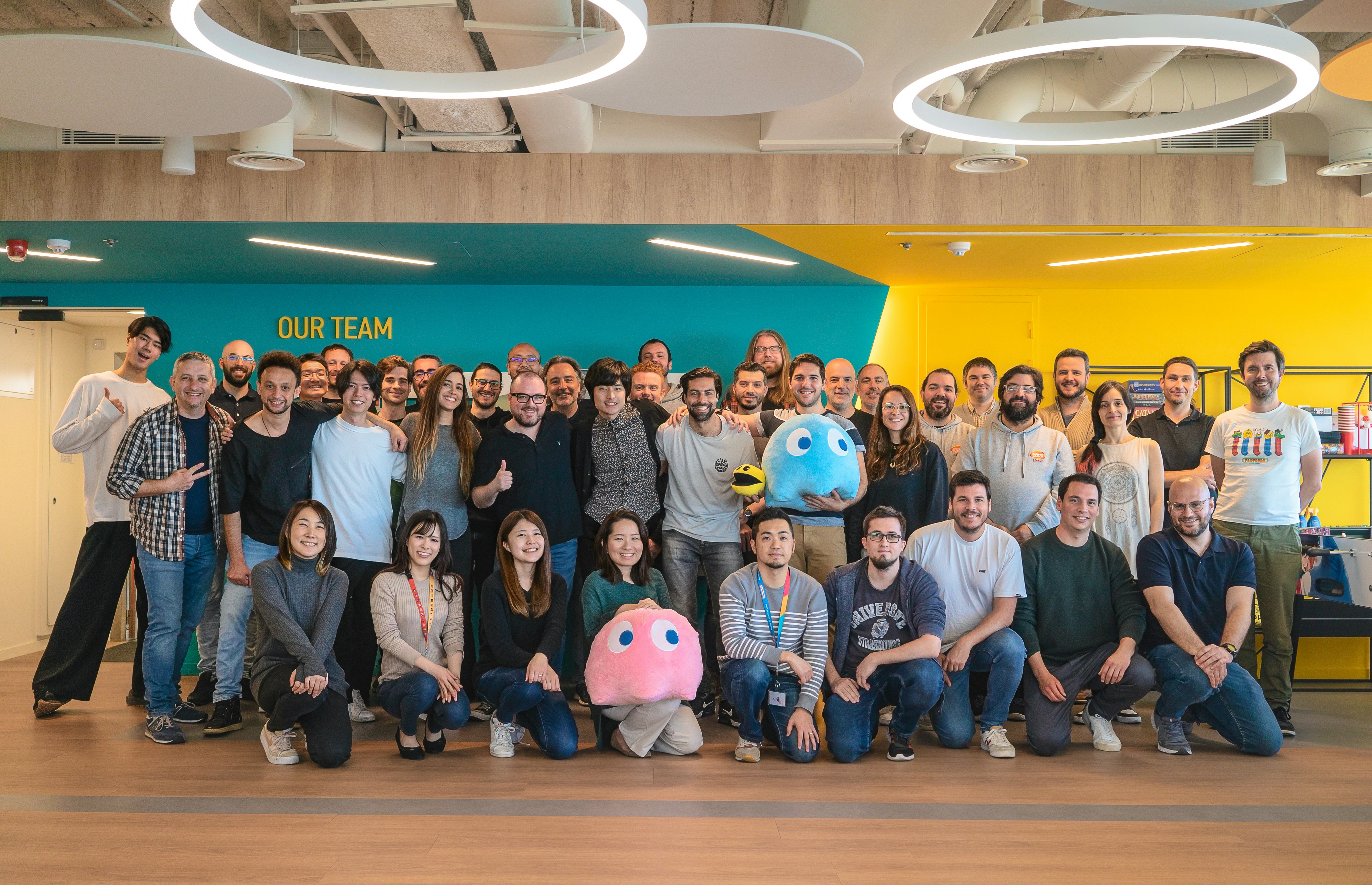Developing and Publishing Mobile Games: A Tale of East and West
A Journey Through Cultures, Game Mechanics, and the Beauty of Being Different
The global mobile gaming industry is a tapestry of diverse cultures, design philosophies, and market strategies. It makes sense.

Gaming has been everywhere in the last 30 years, from that dusty NES you keep in the attic to the daily match-3 sessions you put in-between breaks, it has been an integral part of the cultural weave of almost every country in the world. Gaming culture is geek culture, and geek culture is… well… world culture in 2024.
At the heart of this intricate web lies the age-old debate: East vs. West. From the days of the original Baldur Gate to the craze of the seventh Final Fantasy in the West, development practices have been under gamer scrutiny, mainly informed by individual taste. But in today’s interconnected world, a world where mobile gaming has been slowly taking its place at the top as the most preferred medium to game on, it’s more about understanding and blending the best of both worlds.
Interestingly, when we trace the origins of mobile gaming, our journey takes us to the cold climes of Scandinavia. Finland, in particular, has been a pioneer in this space. Nokia, the Finnish telecommunications giant, introduced the world to mobile gaming with classics like Snake, the first real mobile craze. It’s worth noting, though, that the very first seeds of mobile gaming were sown even before Nokia’s dominance. The Haggenuk MT-2000, a device from Denmark, was believed to be the first phone with gaming capabilities to actually feature a game , until further historical dives revealed that Siemens S1 and IBM Simon, both from 1994, had hidden games like Klotz (a version of Tetris) and Scramble.
And while the West was carefully pressing their number buttons to extend their ‘snake’, the evolution of mobile gaming saw various regional dynamics at play. While Japan had its unique trajectory with high-spec phones from national companies like Sony and Fujitsu, the West saw a dominance of brands like Nokia and Motorola (3210 and Startac are probably two of the most iconic phones ever created).

The game-changer, quite literally, was the introduction of the iPhone, followed by Android platforms, which unified the marketplace and set the stage for the mobile gaming boom we witness today.
They started the mobile platform revolution that saw Rovio’s Angry Birds from Finland become a global phenomenon, popularizing the freemium model for mobile games with later versions and spin-offs of the franchise. And let’s not forget Supercell, another Finnish powerhouse, known for its blockbuster hits. Even if we extend our gaze to the broader Scandinavian region, Sweden’s King, the name behind Candy Crush, stands out. This Nordic influence underscores the global nature of mobile gaming, where innovations can emerge from the most unexpected places.

Originating from Bandai Namco and with deep roots in Japan, BNM stands in the middle of this cultural confluence.
Our Barcelona studio, a melting pot of cultures, is a testament to this synergy. We’ve previously discussed our cross-cultural marketing strategies and how we’ve successfully brought some of Japan’s most popular IPs to the Western market.
But the differences (and similarities) in developing and publishing games run deeper than just marketing.
In Japan, the birthplace of many iconic video games and modern gaming in general, the development process often starts with the storyline. The narrative is paramount. This approach is deeply rooted in the country’s rich tradition of storytelling, from ancient folklore to modern manga. However, it’s not just about the story. Japanese games are also known for their intricate mechanics, often requiring players to delve deep and invest time to master. This approach resonates with the local audience, who value depth and complexity.
Contrast this with the West, where game mechanics often take center stage. The gameplay loop, the reward system, the user experience – these are the pillars upon which Western games are built. The storyline, while important, often takes a backseat. You just have to contrast the early 90s strategy and adventure games of the West to the intricate storylines of JRPGs to really feel the difference. This design philosophy aligns with the Western audience’s preference for immediate gratification and shorter, more intense gaming sessions, especially in the US.
And while we have praised the Nordic influence earlier in the article, this is a good place to remind ourselves that for many years the U.S. was often considered the epicenter of this Western market. Certainly a significant player in the mobile gaming landscape, opinions vary on its role as the spearhead of mobile game development. Companies like Scopely and Zynga have made their mark, but it's worth noting that their paths to success have been diverse. Scopely, for instance, has grown through acquisitions, while Zynga originated as a browser game company and has faced challenges in transitioning to mobile. Still, these companies have not only published iconic games but have also pioneered strategies that shape the industry's landscape. And regardless of these debates, what's clear is that the U.S. remains a key market, home to a diverse range of gaming companies.

The US also stands as the nucleus of the modern mobile gaming ecosystem, hosting pivotal platforms such as Apple Store and Google Play (games in the App Store account for 70% of its entire revenue). These platforms have revolutionized distribution and monetization strategies, offering a marketplace where developers can reach millions of users seamlessly.
The introduction of app stores has democratized game publishing, allowing even small developers to compete in the global arena.
A testament to this is the story of the indie game developer Eric Barone, who single-handedly created the hit game Stardew Valley. Initially a PC game, its transition to mobile platforms opened up a vast new audience, showcasing that with talent and a compelling concept, even a single developer can compete with large gaming studios on the app stores.
And last, but certainly not least, it would be foolish not to acknowledge that the US is the birthplace of some of the most popular marketing platforms — Facebook, X (formerly known as Twitter), Instagram, Discord, and Twitch — which have redefined how games are promoted and communities are built. These platforms offer unparalleled avenues for game promotions, fostering vibrant communities where fans can connect, share experiences, and even influence game development through feedback and reviews. The synergy of these platforms with the gaming industry has created a dynamic ecosystem where games are not just products but experiences enriched through social connections and community engagements.
While there was a tendency to think of the East vs West debate as a US vs Japan affair (and still is for us at BNM), globalization has brought more players to the scene. From the dominance of Chinese mobile gaming conglomerates to the unlikely success of Korean star hitters, there is no shortage of innovation in the mobile scene.
China, for example, offers a drastically different perspective. With a pragmatic approach to game development, Chinese studios are known for their rapid iteration cycles. They’re quick to adapt, innovate, and pivot based on market feedback. This agility is perhaps a reflection of the broader Chinese market, where competition is fierce, and the margin for error is slim.
Yet, even within the East, there’s no monolithic “Eastern approach.” Japan and China, despite their geographical proximity, have distinct gaming cultures. While Japanese games prioritize narrative depth, as we said, Chinese games often emphasize power dynamics, reflecting the country’s competitive social and economic landscape. When you are competing against hundreds of companies for a place in the sun, you run to avoid the shade.
Korea, another major player in the Eastern gaming scene, places a premium on aesthetics and immersion. For those of you immersed in the Korean music-drama-comics Triforce, you know how important beauty is to the Korean approach. This is clear in the country’s slew of visually stunning MMORPGs, which offer players a chance to lose themselves in expansive virtual worlds. Really, their open-world games are beautiful.

The platforms also tell a story. In the West, consoles and PCs reign supreme, with mobile gaming often seen as a more casual alternative. In contrast, mobile gaming is the mainstay in many Eastern countries, driven in part by market dynamics. For instance, console censorship in China and Korea has bolstered the mobile and PC gaming sectors.
Globalization, however, is blurring these lines. Japanese players, traditionally averse to shooters, are now embracing a wider variety of genres. The rise of Western games in Japan and the increasing popularity of Japanese games in the West are testament to this cultural exchange.
Feedback mechanisms differ, too. Japanese players, known for their politeness in interpersonal interactions, are surprisingly candid and demanding when reviewing games online. This has led some Japanese developers to tread cautiously when soliciting player opinions. Western players, on the other hand, tend to be more forgiving.
Another fascinating trend is the creation of dedicated game builds or servers for different regions. Activision Blizzard was among the first companies to see the benefit of this with Battle.net. This service allowed players to chat, host and join online games, and was integrated directly into the games themselves. It was one of the first online gaming services incorporated into a game and was launched in conjunction with the release of the original StarCraft in 1998. It continued to be the service used for Warcraft III which was released in 2002. These regional servers keep the main game features the same for everyone, but make the games run smoothly and allow for changes based on the different tastes and seasons in each region.
From a marketing perspective, the strategies employed can vary widely between the East and the West. Tools, communication channels, and even the choice of social media platforms can differ, reflecting the unique cultural and market dynamics of each region. There is no secret sauce as to what might do the trick; after all, we are slowly becoming a portmanteau of our common pop influences. But there are trends, and those trends inform strategies.
For example, there is a trend of gaming companies with global reach to establish game development studios in East Asia: that trend is not solely a cost-saving measure. It's a multifaceted strategy that taps into local talent pools and cultural insights, fostering innovation and elevating game quality. This approach creates a synergy between different regions, resulting in games that appeal to a global audience.
On the flip side, the global nature of the industry has also seen many Japanese gaming companies establish studios abroad. However, these studios often focus on areas other than game development. Notable exceptions include giants like Bandai Namco (hurray for us) and Square Enix. At BNM, even with our close ties to Japan, we enjoy a significant degree of autonomy. This freedom allows us to innovate, blending the best of East and West in our effort to create new IPs, and games created by a Western team for a Western audience.

BNM stands at this crossroads of cultures.
Our diverse team, with experience spanning East and West, allows us to blend the best of both worlds. We understand the nuances of both markets, from the importance of soft-launching in the West to the narrative-driven approach of Japanese games.
Our projects focus on identifying market opportunities while ensuring the game remains fun and innovative. This balance is crucial in a market as dynamic as mobile gaming.
Our autonomy, despite our close ties with Japan, gives us the flexibility to innovate. We’re not just another overseas studio; we’re a hub of creativity, pushing the boundaries of mobile gaming. Our commitment to professional growth, as highlighted in our previous articles, underscores this ethos.
The East vs. West debate in mobile gaming isn’t about superiority; it’s about understanding, appreciation, and collaboration. As the industry continues to evolve, it’s this spirit of unity in diversity that will drive the next wave of innovation. If you want to be part of that spirit that permeates everything, we do in BNM, come and join the team.

Bandai Namco Mobile
Published: 27 February, 2024



